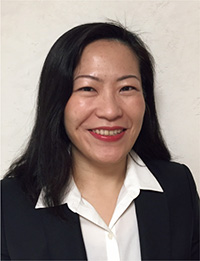Diplomatic Bluebook 2016
Chapter 4
Japan’s Diplomacy Open to the Public
4.The Convention on the Civil Aspects of International Child Abduction (the Hague Convention) and its Implementation
The Hague Convention is designed to ensure immediate return of children who have been wrongfully removed from one contracting state to another. It is based on the idea that the custody (parental authority) of a child, whose parents’ marriage has failed, should be decided in the state in which the child habitually resides. Also, in order to ensure the opportunity for trans-boundary parent-child access, the Hague Convention prescribes that Contracting States should cooperate for realization of parent-child access.
This convention came into force in Japan on April 1, 2014. On the same date, the Act for Implementation of the Convention on the Civil Aspects of International Child Abduction was enforced. As of now, 93 countries including Japan are party to the convention.
A governmental agency designated as the Central Authority provides assistance to fulfill the obligations under this Convention. In Japan, MOFA assumes the role of the Central Authority by assembling experts in various fields, communicating/cooperating with foreign Central Authorities to implement the Convention, and providing assistance to the parties such as locating whereabouts of the child and arranging mediation services towards amicable resolutions. In the 21 months from the entry into force of the Convention to end-December 2015, MOFA received a total number of 168 applications: 76 applications for assistance in return of the child and 92 applications for assistance in access to the child.
During the same period, seven children returned from another country to Japan and 13 from Japan to another country. These numbers include three returns of children to their country of habitual residence where assistance in access to the child by the Central Authority eventually led to the agreement between the parties to return the child.
Furthermore, MOFA has been taking steps to promote amicable settlements and smooth realization of visitation or contacts such as the introduction of “Online Mimamori Contact System” which provides parents and children living apart online meeting sessions with assistance from an expert from the Visitation or Contact Supporting Institution, the Japan-Australia joint training for mediators from alternative dispute resolution (ADR) institutions, and so on. In addition, MOFA made efforts to enhance the support that can be provided to Japanese nationals living abroad at diplomatic missions overseas, such as collecting and organizing information in order to introduce organizations supporting domestic violence (DV) victims, lawyers, interpreters/translators, mediation institutes, and visitation or contact supporting institutions.
In addition, MOFA puts effort into public informative activities because it is expected that promoting public awareness of the Convention will lead to the prevention of unlawful transnational abduction of children.


I had an opportunity to participate in the “Australia-Japan joint mediation training for Hague Convention cases” held in Yokohama for a five-day period of September 7-11, 2015, under the auspices of the Ministry of Foreign Affairs (MOFA).
Mediation means an attempt to find a resolution by promoting dialogue between the concerned parties. In cases related to the Hague Convention, parents of different nationalities often become the involved parties. In order to promote dialogue between such parties for a resolution, it is important for a mediator who actually advances dialogue between the concerned parties to understand the culture, law, and society of each party’s country. This is why the training was organized. This training was attended by a total of ten lawyers and family court conciliators from Japan and a total of 14 lawyers, judges and family court staff from Australia. Aiming at understanding each other’s laws as well as culture and customs through direct contact, we spent five days working hard together from morning to, in some cases, as late as 9 o’clock in the evening.
In this training, a unique approach was employed: two German mediators well-experienced in mediation related to the Hague Convention served as trainers, and tried to make both Japanese and Australian participants better understand each other. Instead of either Japanese or Australian participants teaching the other, a third party took the initiative to lead the training, whitch I think created a feeling of solidarity among the entire participants.
The content of the training ranged from an introduction of each party’s family values and the social environment surrounding divorced families to practical matters such as methods for realizing an agreement or its content used at mediation, as well as language problems. All elements needed to resolve the cases spanning between the two countries were touched on. Furthermore, a role play was conducted on efforts to resolve a model case, with joint mediators comprising one Japanese participant and one Australian participant. Given that it is only a few years since Japan concluded the Hague Convention, I think the training, packed with necessary know-how for Japan, turned out to be very significant.
I hope that if a dispute involving the Hague Convention between a Japanese and Australian couple actually occurs, mediators if possible from each of the two countries discuss the case on the basis of this training to accumulate the experiences and, in the long future, more Japanese mediators will be able to resolve such cases jointly with mediators from other countries. I would be happy if I could help in this regard.

